A regular program of simple strength exercises can improve your posture and strengthen your core. Benjamin Masci shares five exercises to help your body balance.
A balanced body helps any rider confidently tackle the physical demands of the bike (and of life in general). Strong legs without a solid core can cause lower-back strain with extended exertion. Having a strong core, but no leg strength can be equally frustrating. This is where strength and conditioning exercises come in.
Strength and conditioning training is not gender or age specific and is important for all fitness levels. Individuals with sedentary jobs, such as office workers, can use strength training to help correct postural weaknesses, while more active people rely on core conditioning to assist with the physical demands related to their activities. Adding resistance to movements will also maintain or increase bone density, which is useful for all of us as we age and hugely important to help counteract bone degenerative conditions such as osteoarthritis. Again, the supported nature of bike riding means it does not benefit bone density by itself.
An important element to any strength and conditioning program is that it includes a variety of exercises to train the whole body rather than one muscle at a time. Also known as ‘compound’ exercises, those who train multiple muscle groups at once are more effective as they require a greater amount of core activation to stabilise the body.
The following exercises can be performed as a full body strength and conditioning program. Try to perform each exercise for 30 seconds and repeat the whole program three times. As your performance improves, attempt each exercise for longer time periods. Whatever the scenario, the essence of effective strength and conditioning revolves around correct exercise technique and adequate recovery time. Both will result in positive gains and decrease the risk of injury.
The Plank
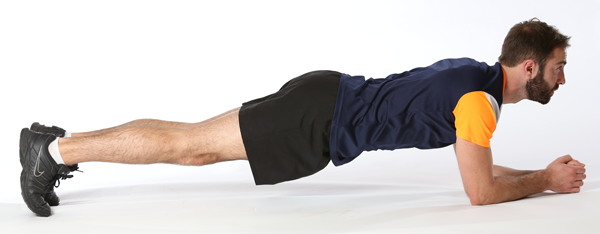
Back soreness and abdominal tightness from long periods of time spent hunched over bike handlebars is a common complaint from bike riders. The benefit to strengthening core muscles is not only will it minimise these symptoms but it will also enhance the efficiency of other working body parts as they will no longer be required to over compensate for weak core strength. The plank is an isometric exercise (no moving body parts) that primarily recruits core muscles that are responsible for postural stabilisation.
Hold your body in a pronated position (facing down towards the ground) resting on your elbows, hands (or forearms) and toes.
Keep your hips in a neutral position so as not to raise your bottom too high in the air or drop your pelvis too low to the ground.
Push Ups
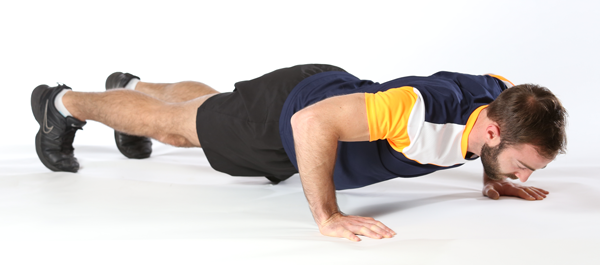
The good old push up is still a great way to strengthen the chest, shoulders, back and arms. Men and women alike can benefit from the upper body strength gained from lifting their own body weight in this exercise. The range of motion through the arms is also an excellent conditioning movement for bike riders who are used to maintaining a static position at the elbow joint.
Begin from a face down position with your hands and toes shoulder width apart (can be on your knees to make it easier).
Lower your body until your nose is about 10cm from the ground, pause, and then raise yourself back up. Prevent your hips from raising too high or sagging too low by flexing your abs.
¾ Squats
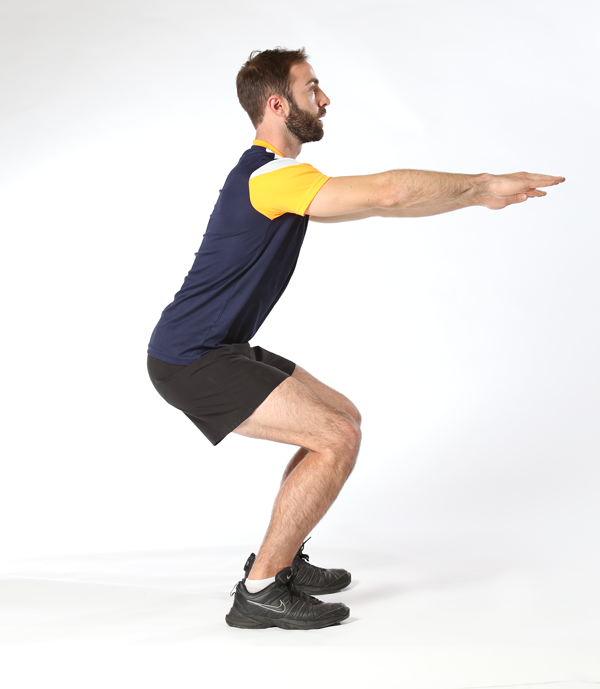
People who have tight or fatigued leg muscles will benefit from ¾ rather than full squats as the altered range of motion will strengthen the hip and leg muscles whilst avoiding further pain and injury.
Begin from a standing position with feet shoulder-width apart. Body weight should be concentrated on the heels so that they remain firmly on the ground.
While keeping your chest out and shoulders back begin lowering your body towards a seated position. Focus on your hips moving down as well as backwards and lower your body until your knee is at a 75° ( ¾ ) angle to your thigh.
Lunges
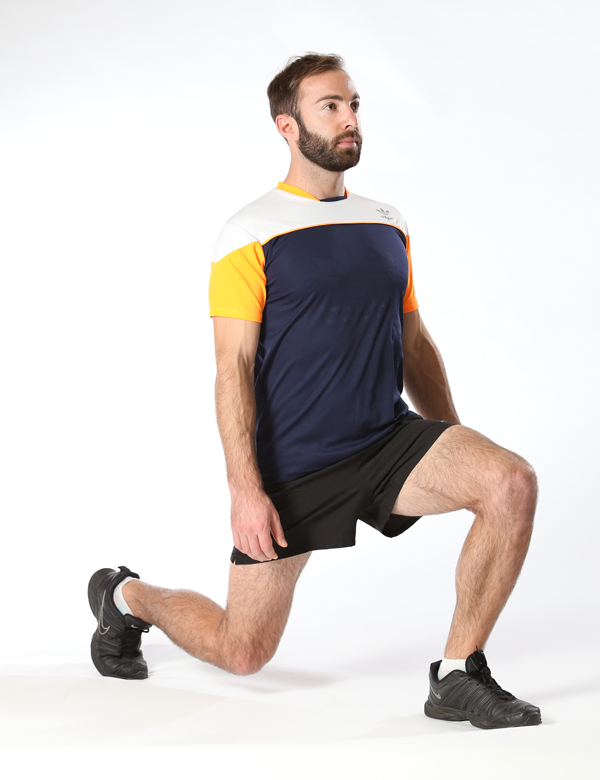
Lunges are an excellent way to improve lower limb and buttock strength whilst also enhancing stabiliser muscles of the core and upper body. It must be noted that the primary leg engaged in the lunge movement is the back leg while the front leg works to align and help maintain a neutral position. Lunges can be used as a stretch for the hip joints as well as a strengthening tool for the legs.
From a standing position with feet slightly apart take a large step backward far enough to be able to have your front foot flat on the ground and your back foot ‘toes only’ on the ground and heel up.
Keep your chest out and shoulders back and flex your abdominal muscles as you lower your body. Be sure not to allow your front knee to move forward. Alternate legs accordingly.
Dips
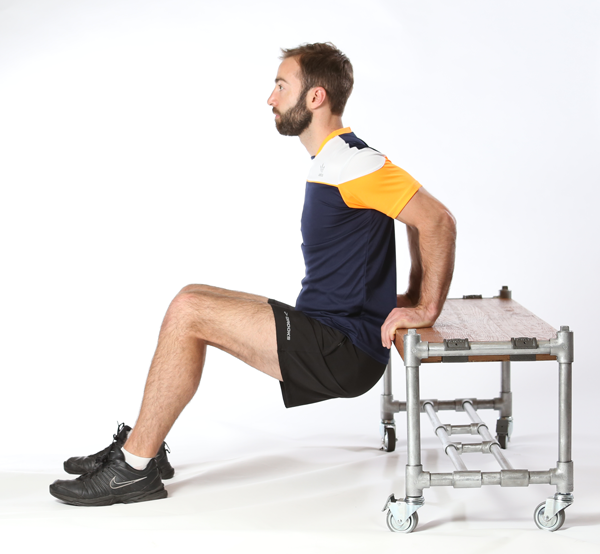 This exercise requires the use of a chair or weight bench. It enhances upper body and arm strength. The tricep muscle behind the upper arm is responsible for numerous daily movements. Every time you straighten your arm, this is the muscle instigating the straightening motion. Having strong triceps is also great for people conscious of excess fat storage in the upper arm area.
This exercise requires the use of a chair or weight bench. It enhances upper body and arm strength. The tricep muscle behind the upper arm is responsible for numerous daily movements. Every time you straighten your arm, this is the muscle instigating the straightening motion. Having strong triceps is also great for people conscious of excess fat storage in the upper arm area.
Begin from a seated position on your chair with your palms on the chair next to your hips and fingers forward.
Using your legs, raise your body weight onto your arms and move your feet forward so your bottom is hanging in front of the chair.
Lower your body by bending your elbows until you’re about 10cm from the ground, pause, and then return back up.
Benjamin Masci (BExSci) is an exercise physiologist and personal trainer with a love of cycling.
Ride On content is editorially independent, but is supported financially by members of Bicycle Network. If you enjoy our articles and want to support the future publication of high-quality content, please consider helping out by becoming a member.
